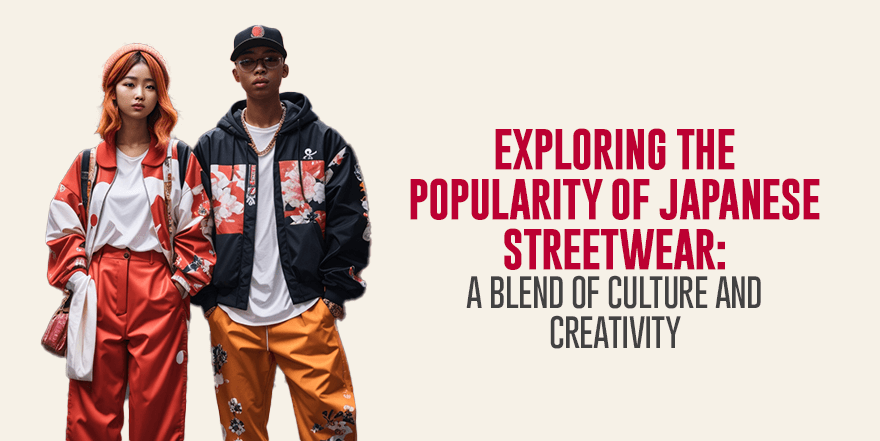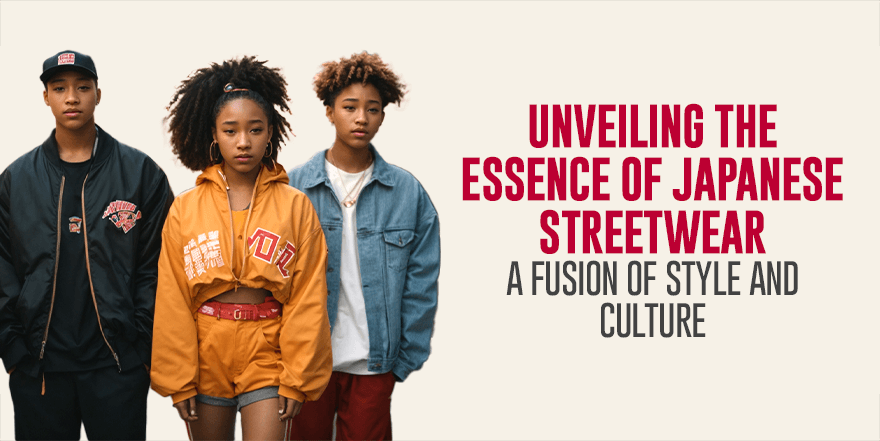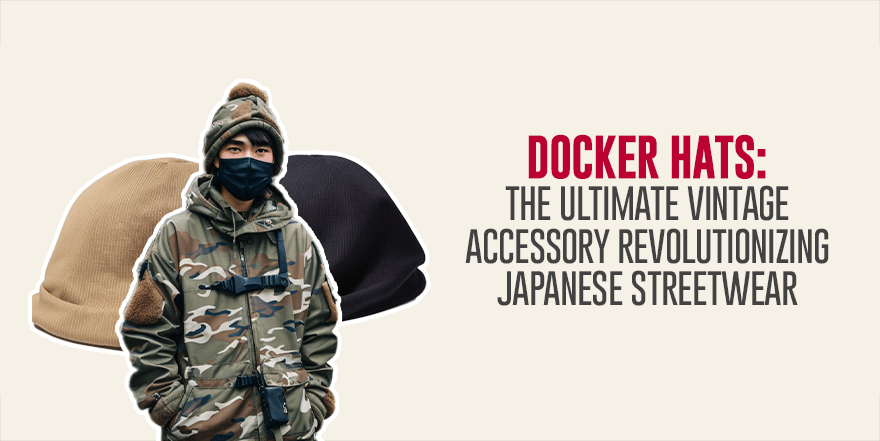Your Cart is Empty
Streetwear has become a global phenomenon, resonating with urban environments and capturing the attention of fashion enthusiasts worldwide. Originating in the streets of New York in the 1980s, this unique clothing style has experienced a remarkable surge in popularity across the globe. In this article, we will delve into the history of Japanese streetwear, renowned for its distinctive fusion of traditional garments, such as kimonos and haoris, with contemporary urban fashion.

Streetwear emerged as a clothing style deeply rooted in the urban streets and influenced by hip-hop, punk culture, street art, and sports. Initially characterized by loose and comfortable clothing such as baggy jeans, oversized t-shirts, and sneakers, streetwear has evolved into a fashion trend that blends elements of sportswear, music, street art, and ethnic influences. Over time, the movement has shifted to more form-fitting designs while maintaining a focus on quality, attention to detail, and a diverse range of inspirations.
Streetwear was born out of a desire for self-expression and rebellion against the extravagant and sophisticated fashion trends of the time. Rooted in the streets, it became a subculture that represented a free and creative lifestyle inspired by hip-hop, skateboarding, and various urban movements.
The influence of street artists and record companies, particularly in the realm of hip-hop, propelled streetwear into the mainstream fashion industry, garnering widespread popularity and recognition. Today, the trend has transcended its origins, embracing a broader demographic and finding its place in various environments, including luxury fashion.

Japanese streetwear has a rich history that reflects the blending of Western and Japanese cultures. Following the American occupation of Japan after World War II, the country experienced a significant influence from Western culture and capitalism. This cultural exchange laid the foundation for a new generation of young Japanese individuals who embraced Western influences and later developed their own streetwear fashion.
In the 1990s, Tokyo became the epicenter of Japanese streetwear, with young Japanese pioneers adopting and adapting the urban style. Brands like A Bathing Ape, WTAPS, and international labels like Supreme and Stüssy gained prominence, aided by retail stores like NOWHERE. Japanese streetwear stood out by integrating traditional garments like kimonos and haoris into the streetwear aesthetic, offering a unique and distinctive twist.

The global popularity of Japanese streetwear can be attributed to several key factors. First, Japanese designers made significant efforts to customize and adapt American models to suit the local culture, infusing their creations with a distinct Japanese touch. Second, the impact of influential brands like Nowhere, Urahara, and Supreme, along with the proliferation of Japanese department stores, played a vital role in spreading the urban trend throughout fashion districts like Harajuku and Shibuya. Lastly, media coverage, including music videos, news reports, and movies, helped elevate Japanese streetwear's popularity, introducing it to a broader audience around the world.
The influence of Japanese streetwear extends far beyond its home country. Fans of streetwear have embraced Japanese-inspired clothing, incorporating elements like haoris, kimonos,sweatshirts with Japanese characters,military pants, and masks into their wardrobe. The unique message conveyed by the Japanese streetwear movement, emphasizing that one doesn't need to be wealthy to revolutionize fashion, resonates with fashion enthusiasts worldwide, adding a touch of cultural diversity and creativity to the global fashion scene.

Japanese streetwear's popularity stems from its distinctive blend of culture, creativity, and the ability to resonate with fashion enthusiasts worldwide. By incorporating traditional garments like kimonos and haoris into the urban aesthetic, Japanese streetwear has carved out a unique niche within the global fashion landscape.
The success of Japanese streetwear can be attributed to its ability to adapt and customize American models to suit the local culture. Designers have infused their creations with a distinct Japanese touch, incorporating elements that celebrate the country's rich heritage and artistic traditions. This fusion of traditional and contemporary styles has captured the attention of fashion aficionados, who appreciate the authenticity and uniqueness that Japanese streetwear brings to the table.
Furthermore, the impact of influential brands such as Nowhere, Urahara, and Supreme cannot be understated. These brands, along with the rise of Japanese department stores, have played a significant role in promoting and disseminating Japanese streetwear globally. Fashion districts like Harajuku and Shibuya have become hubs of creativity and expression, attracting fashion enthusiasts from all corners of the world.
The media has also played a crucial role in the popularity of Japanese streetwear, showcasing its influence through music videos, news reports, and movies. The visual appeal and distinct aesthetics of Japanese streetwear have captivated audiences, leading to a growing global interest in the style.

Beyond its borders, Japanese streetwear has left a lasting impact on the global fashion scene. Enthusiasts worldwide have embraced the incorporation of Japanese-inspired elements into their own streetwear outfits, such as haoris, kimonos, and clothing adorned with Japanese characters and artwork. This cross-cultural exchange has enriched the streetwear movement, fostering a sense of appreciation for different cultures and encouraging fashion enthusiasts to embrace diversity and creativity in their personal style.
In conclusion, Japanese streetwear's popularity is a testament to its ability to transcend cultural boundaries and capture the imagination of fashion-forward individuals worldwide. With its fusion of traditional and contemporary elements, Japanese streetwear continues to evolve and inspire, showcasing the power of fashion to bridge gaps and foster a global sense of style and identity. Whether on the streets of Tokyo or in fashion capitals around the world, the influence of Japanese streetwear is undeniable, making it an enduring and beloved trend among fashion enthusiasts who appreciate its distinctive charm.
Comments will be approved before showing up.
By Credit & Debit Cards, Paypal or Apple Pay
For all orders over $100
We're available 7 days a week
Reply within 24 hours
Not loving it?
Free return within 30 days


